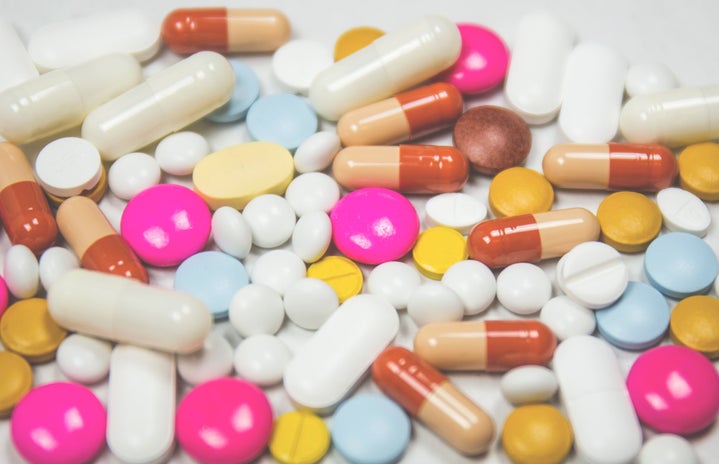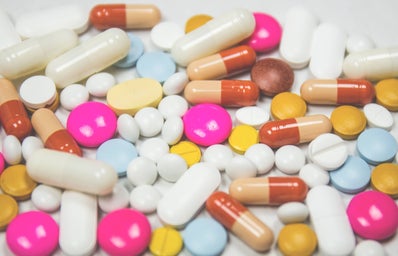We send our condolences to the illusion of childhood innocence. The secret is out: teenagers have sex, do drugs and all the other zany things adults do; and apparently they also wear a whole lot of glitter while doing it.
Euphoria came out this June and is centered around the life of a recovering drug addict, Rue (played by Zendaya) and those that are close to her.
Euphoria has garnered itself a reputation for being explicit, shocking and controversial. Part of its notoriety is for its portrayal of highly sensitive topics ranging between porn, abortion and sexuality. Two topics that have remained issues at the forefront of the show are the use of recreational drugs and mental health.
Still, these subjects have been covered within teen entertainment for decades. Skins for example, is another television show that dealt with the same taboo topics as Euphoria and was also aimed at the same age group.
Skins is a British television show that premiered in 2007. At the time of its release, Skins was groundbreaking and made a large cultural impact for its depiction of underage sex, reckless drug use and for beginning more conversations about youth mental health.
How we handle sensitive subject matter has changed over the past decade so in the present day, Skins has been criticized for romanticizing the same issues they were applauded for bringing up years earlier. A modern audience watching Skins now believes the substance abuse and mental health issues portrayed in the show were branded as exciting and desirable.
Although Euphoria is also showcasing mental health and substance use as well, the way the show handles the subject matter is innately different.
The material is still undeniably graphic, with depictions of Rue snorting white powders, swallowing unknown pills and even ingesting a glob of Fentanyl off of a drug dealer’s switchblade.
The way in which Euphoria differs from shows like Skins is the handling of consequences.
While the show depicts the highs Rue feels with the saturated cinematography mirroring her euphoric bliss, they also showcase the lows. The dramatic lows of substance dependence are exemplified in episode three “Made You Look,” where Rue’s close friendship with her the town drug-dealer Fezco, or Fez (played by Angus Cloud), is explored. After Fez refuses to sell her drugs, Rue begins to aggressively lash out. Despite their friendship, she berates him for selling her drugs in the first place, cursing at him while repeatedly smashing at his garage door, crying and begging for him to open it.
Rather than being eye-roll inducingly dramatic, the scene showcases the gut wrenching reality of drug withdrawals and how they affect not only the addict but also the people around them.
Madison Ludy, an individual who previously struggled with Percocet dependency, said this was once a reality for her.
“I’ve had multiple experiences where I’m angry or screaming at drug dealers to sell to me because it’s their job even though they were trying to do me a favor,” she said. “People will do whatever it takes to fill the void they have, therefore Rue going to Fez’s house and screaming at him is a real thing that happens all the time.”
“If you want it bad enough you will do whatever, no matter how pathetic it makes you look or feel,” Ludy said.
The aggressive lows aren’t showcased as directly in other television shows marketed to teens. They don’t depict how substances affect those closest to you, such as friends and family. Most shows avoid the depiction of painful withdrawal symptoms and portray recovery as a linear journey despite the fact that relapse is a quite common part of the recovery process.
Although there are shows like Degrassi and Skins deal with both the topics of substance use and mental illness, they seem to be treated as two separate issues, as opposed to being interrelated as they so often are in reality.
In the first episode of Euphoria, we are informed of Rue’s medical diagnoses which includes ADHD, anxiety and depression. These diagnoses aren’t treated as separate from her substance dependency but rather are connected to it as she utilizes substances to help cope with her mental health issues and also the grief from the loss of her father.
Marcia Zemans, a psychiatrist at CAMH said, “My experience and the research shows that the vast majority of people with substance use disorders have underlying mental health issues.”
“Alcohol can be a quick fix for anxiety but unfortunately can lead to a whole other set of challenges. Sometimes when an anxiety disorder, mood disorder, psychosis or personality disorder is untreated for whatever reason, people go to substances to get relief,” she said.
The relationship between drug dependency and mental health is especially shown in episode seven “The Trials and Tribulations of Trying to Pee While Depressed,” when Rue is portrayed in her most depressed state. She can no longer use drugs to cope with her depressive episodes so she is shown binge-watching hours of reality TV and cannot bring herself to move to even pee, which leads to a kidney infection.
Lucinda Sande, a second-year Ryerson University student said, “I think it’s the most honest portrayal of being a depressed teenager on TV I’ve seen, where you’re in such a rut you can’t even bother to take care of yourself on the most basic of levels.”
“It’s gross and ugly and not a lot of media shines a light on that aspect of things,” she said. “It’s especially important as a young person to see because a lot of the time depression in teenagers just looks like laziness, watching TV forever, so it’s good to have that recognized as depression.”
Madison Lundy also praised the show’s portrayal of mental illness. “A lot of the time in today’s society, people who are mentally unstable or have a mental illness, are subject to stigma,” she said. “To be able to show the population that these people are not crazy or dramatic plays a big role in the overall change of how we view people who deal with mental illness and substance abuse.”
“I also feel that it gives insight for family members dealing with children or adults in their family, who are struggling,” she said. “To show them a way to not go about the situation or to show them a good alternative to talking to their family members. In my own experience, I never reached out to anyone to help me because I knew the reaction that people have so I think the depictions are necessary in every way.”
Although Euphoria is being applauded for it’s gritty depiction, it has also garnered some flack. An article for the New Yorker said it felt like a “pornographic after-school special.” President of the Parents Television Board, Tim Winter also said, “All of these shows are clearly marketing the most extreme, explicit behavior and conduct to children and teens. As a result, children are led to believe that such extreme conduct is acceptable … It is naive to believe that the entertainment children consume cannot have harmful, lasting consequences.”
While the portrayal of substance use and mental health in Euphoria may be graphic and even triggering to some, it is also unrelentingly necessary. By choosing to divert from the usual routes of either sensationalizing or ignoring these issues, Euphoria has brought something refreshing to the oversaturated market of television. Through bringing substance issues to light in such real terms, Euphoria has helped to humanize a portion of the population that are often demonized.
While Euphoria may not always be a comfortable watch, it is without a doubt a necessary watch and deserving of all it’s hype.



